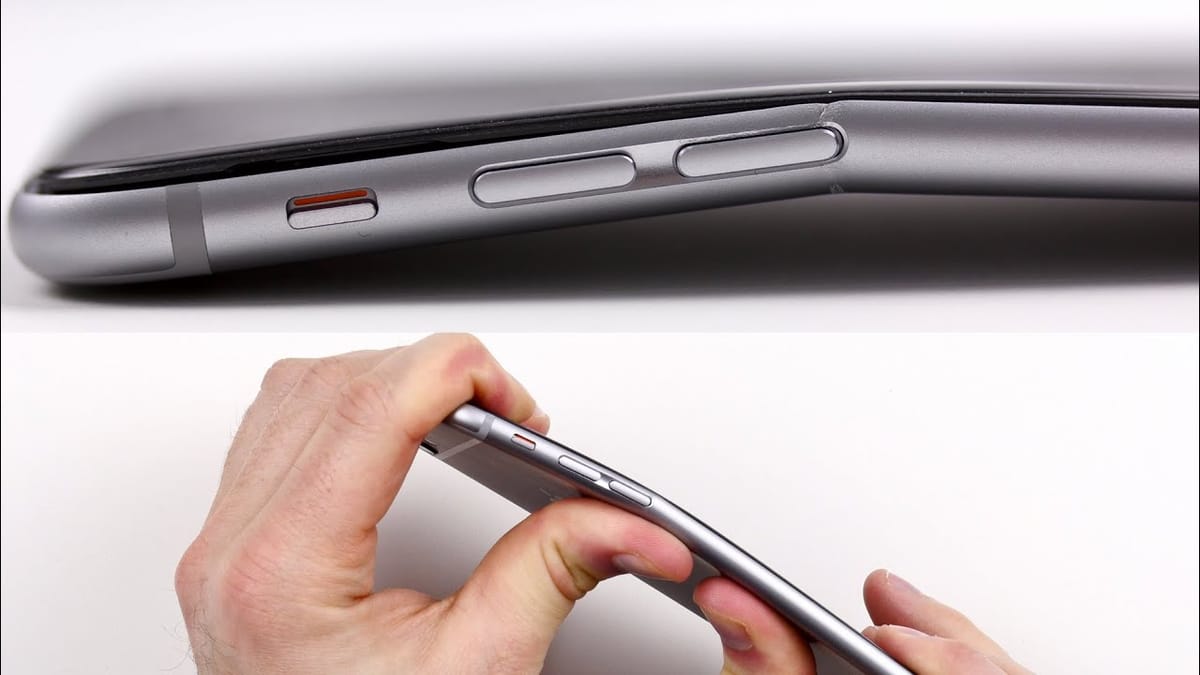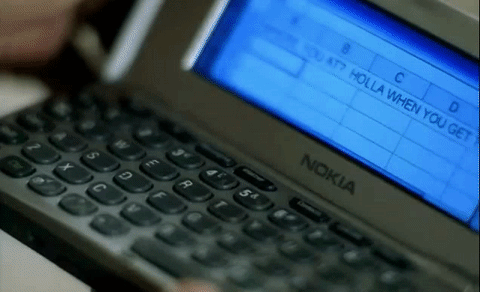Why #bendgate is Important

Two days ago, YouTube user Unbox Therapy posted a video demonstrating how under the pressure exerted from just his hands, he was able to bend and seriously damage the week old iPhone 6 Plus.
Before Lew, the man behind Unbox Therapy, could even offer a follow-up video in which he tried to bend a few other phones - including the Samsung Galaxy Note 3, Moto X (2014), Nokia Lumia 1020, HTC One (M8) and the 4.7" iPhone 6 - #bendgate took the news world by storm. Twitter users were reporting seeing large and local media outlets reporting on how the iPhone 6 Plus had issues with bending.
Now, while I don't necessarily agree that #bendgate - or #bendghazi, as some are calling it - should be getting so much attention as it has over the last two days, it's safe to say that if Apple had gone with a slightly thicker design, they would've been able to avoid this situation entirely. Going from 7.6mm in the iPhone 5S (8.97mm in the iPhone 5C) to 7.1mm for the 6 Plus and 6.9mm for the iPhone 6 resulted in the:
- The ability to have the camera remain flush with the rest of the device, leaving an ugly, protruding bulge (something Apple is aware of and is actively hiding in their promotional pictures of their two new devices)
- The removal of what most phones have - a magnesium chases, which makes up the inside of these other phones, even the ones that only have a metal band around the edges to ones entirely made of plastic.
Due to the fact that Apple decided to go with a large, flat sheet of aluminum - a soft metal - the structural integrity of the device isn't going to be as sound as other devices made from a similar process, like the HTC One (M8). With a soft metal like aluminum, the weakest point is often going to be near the centre of the device. In the case of the 6 Plus, it gave into far more bending and resulted in far more damage because when compared to the 4.7" iPhone 6, the aluminum unibody build has nearly an extra inch of real estate. It doesn't help either that in Lew's video, he's placing the iPhone 6 Plus under far more stress than the phones are designed to undergo based on what an average person's usage of the device. Not everyone is going to be twisting and bending the phone to the extreme, but that being said, the phone still shouldn't be so structurally unsound as to bend and break when inside someone's jeans - which is what sparked this whole controversy in the first place. Case in point is Seattle developer, Kav Latiolais, who's brand new iPhone 6 bent after a spending the night charging.
By designing both a thinner and lighter phone, they were trying to solve a problem that no one ever really had with their iPhones, and in turned, created a whole new PR monster for themselves. Half the reason why this is blowing up so much is because when compared to "terribly cheap plastic" devices like the Moto X and Note 3, the iPhone 6+ took far more damage than you'd think a supposedly high end device, like the iPhone, normally should. The other half is that the iPhone is historically an incredibly expensive device. With people willing to drop hundreds to thousands of dollars year after year to secure a sense of material happiness, it's understandable why they'd be so upset when their week-old device starts to bend and break after normal usage.
This isn't the first time a phone OEM has had users report seriously damaged devices from simple bending. In 2012, an XDA user reported his HTC One X bent in half after sitting on a wall, and only a few months ago did an Android Central forums user reported that his HTC One (M7) was bent we as well, and two days ago, YouTube user, Adam Mckeithan, posted a video of him performing a bend test on his Galaxy S4. And while these users who report such severe damage to their devices may not be indicative of the entire user base, it's important to know that it is still happening. Even if it is only 1%, as Apple is reporting the bendgate numbers to be, out of 10 million devices sold as of two days ago, that's still close to 100,000 users reporting this issue. And that 1% talking about it was enough for Apple's stock to drop 3 points since yesterday, resulting in an $18 billion dollar loss from their $600 billion market cap. That's not a small amount, and isn't something to be brushed aside just because not everyone is reporting having the same issue.
And the thing is that there's nothing wrong with having a slightly thicker phone than everyone else, or keeping the same thickness as the device before it had. Over the last few years, there has been a race to ship the device with the highest resolution display. The leaps and bounds in this sort of technology also helped shape the phablet landscape we have today, and helped OEMs to develop thinner and sturdier phones than years previous. Apple largely stayed out of that because they recognized that past a certain point, the eye can no longer distinguish individual pixels. So while the iPhone's Retina display was sub 720p, it didn't matter to them or their users. By adding more and more pixels to a larger display, the users weren't getting anything extra, other than higher battery drainage. That's something that Sony acknowledged when they announced that they would be skipping over the newest fad, 2K displays. So for Apple to develop a thinner phone other than for the sake of saying that the new iPhone is 1mm thinner than last years model is frankly surprising. They sacrificed the clean, utilitarian look for something that looks more like a prototype than a finished product, especially when the new thinness does nothing for the overall user experience. It's okay to be thicker than everyone else, so long as it improves upon an already great user experience.
If it was any other company, Microsoft or HTC or hell, even Samsung, it wouldn't have mattered as much. Remember when Samsung's S3 and S4 devices had issues with overheating and exploding batteries? Even something far more serious like exploding batteries in more than one device didn't get nearly enough attention as "antennagate," an issue Apple faced back in 2010 with the iPhone 4. And that's because Samsung, HTC, Microsoft, etc., aren't a luxury brand like Apple has become. When you have people clamouring over a new phone every year, waiting in line for a hours, sometimes days on end, you leave the average consumer market and enter the luxury brand tier, being paired with other high end luxury items such as Louis Vuitton purses and Gucci glasses. It's as much a statement about your brand allegiance as it is a declaration of your apparent wealth.
At the end of the day, #bendgate is important for one reason and one reason only - it's this kind of nitpicking from users and reviewers that allows for the next generation of products to be better. From the iPhone 4 to 4S, Apple was able to make adjustments and resolve the entire antenna-gate problem. Companies aren't infallible. They will make mistakes, and are often too close to their own products to see them. I'd rather have a few days of people going bonkers and having a little bit of fun at the expense of one company (and how their newest phone is bending unexpectedly) and have that lead to better products than not at all.




